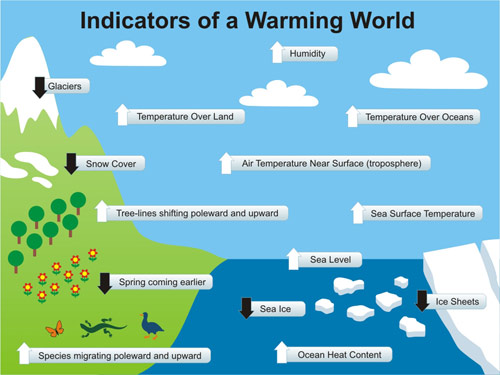 Arguments
Arguments
 Software
Software
 Resources
Comments
Resources
Comments
 The Consensus Project
The Consensus Project
 Translations
Translations
 About
Support
About
Support


Latest Posts
- Fact brief - Do solar panels generate more waste than fossil fuels?
- Zeke's 2026 and 2027 global temperature forecasts
- 2025 SkS Weekly Climate Change & Global Warming News Roundup #51
- Skeptical Science New Research for Week #51 2025
- What are the causes of recent record-high global temperatures?
- Fact brief - Are toxic heavy metals from solar panels posing a threat to human health?
- Emergence vs Detection & Attribution
- 2025 SkS Weekly Climate Change & Global Warming News Roundup #50
- Skeptical Science New Research for Week #50 2025
- The rest of the world is lapping the U.S. in the EV race
- Fact brief - Are electromagnetic fields from solar farms harmful to human health?
- Comparing climate models with observations
- 2025 SkS Weekly Climate Change & Global Warming News Roundup #49
- Skeptical Science New Research for Week #49 2025
- Climate Adam & Dr Gilbz - Paris Climate Agreement At 10: Did It Do Anything?
- Fact brief - Does the recent slowdown in Arctic sea-ice extent loss disprove human-caused warming?
- Why the chemtrail conspiracy theory lingers and grows – and why Tucker Carlson is talking about it
- 2025 SkS Weekly Climate Change & Global Warming News Roundup #48
- Skeptical Science New Research for Week #48 2025
- Consensus machines
- Just have a Think - How an African energy revolution could save ALL of us.
- A girl’s grades drop every summer. There’s an alarming explanation.
- 2025 SkS Weekly Climate Change & Global Warming News Roundup #47
- Fact brief - Are changes in solar activity causing climate change?
- Skeptical Science New Research for Week #47 2025
- Exploring newly released estimates of current policy warming
- Climate Adam - Why the Climate Crisis is a Health Crisis
- Super pollutants are trendy, but we should be careful how we use them
- 2025 SkS Weekly Climate Change & Global Warming News Roundup #46
- Skeptical Science New Research for Week #46 2025
Archived Rebuttal
This is the archived Basic rebuttal to the climate myth "It's cooling". Click here to view the latest rebuttal.
What the science says...
|
All the indicators show that global warming is still happening. |
When looking for evidence of global warming, there are many different indicators that we should look for. Whilst it's natural to start with air temperatures, a more thorough examination should be as inclusive as possible; snow cover, ice melt, air temperatures over land and sea, even the sea temperatures themselves. The key indicators of global warming shown below are all moving in the direction expected of a warming globe.

Indicators of a warming world based on surface, satellite, and ocean temperature measurements, satellite measurements of energy imbalance (the difference between incoming and outgoing energy at the top of the atmosphere), and of receding glaciers, sea ice, and ice sheets, rising sea level, and shifting seasons.
The question of global warming stopping is often raised in the light of a recent weather event - a big snowfall or drought breaking rain. Global warming is entirely compatible with these events; after all they are just weather. For climate change, it is the long term trends that are important; measured over decades or more, and those long term trends show that the globe is still, unfortunately, warming.
Basic rebuttal written by LarryM
Update July 2015:
Here is the relevant lecture-video from Denial101x - Making Sense of Climate Science Denial
Updated on 2015-07-05 by skeptickev.
THE ESCALATOR

(free to republish)
























































